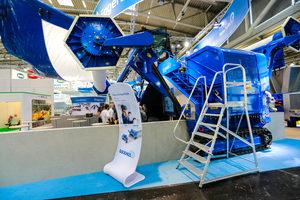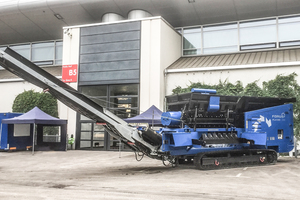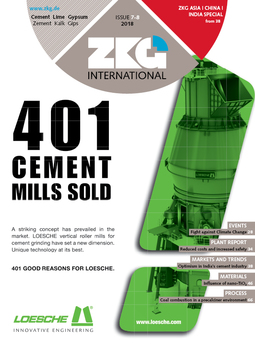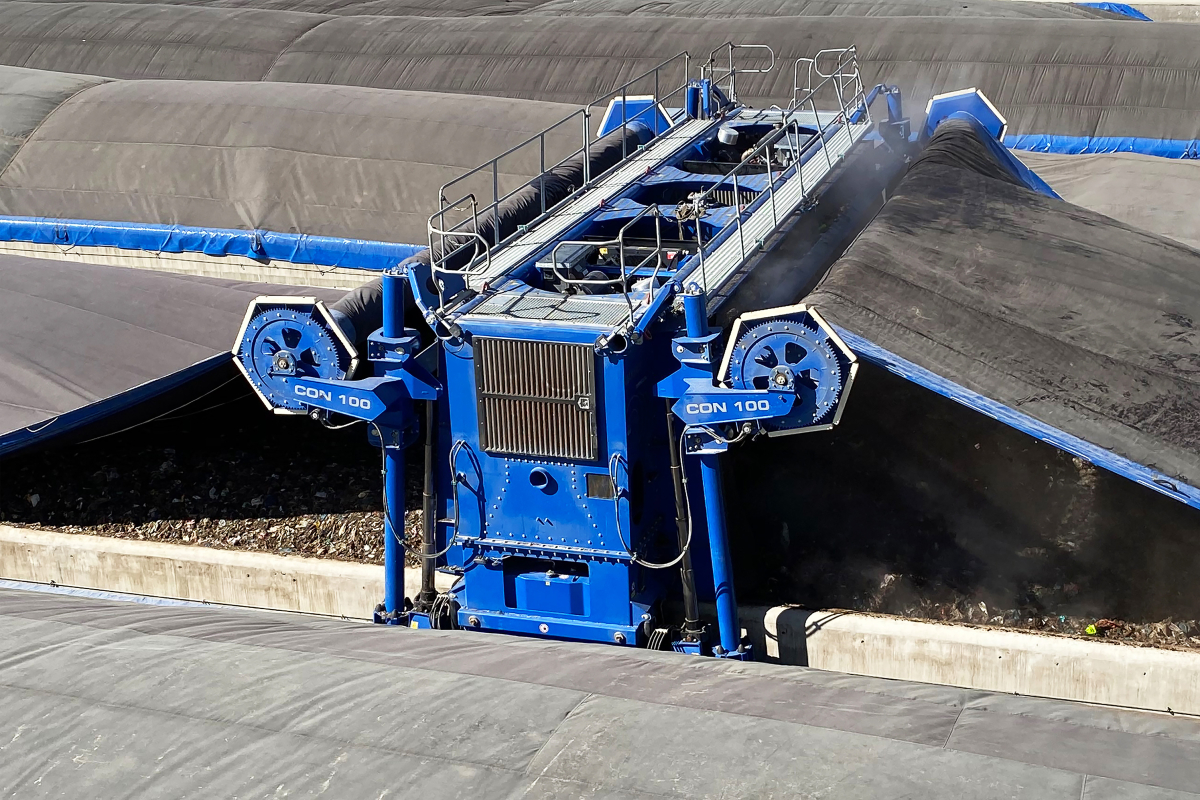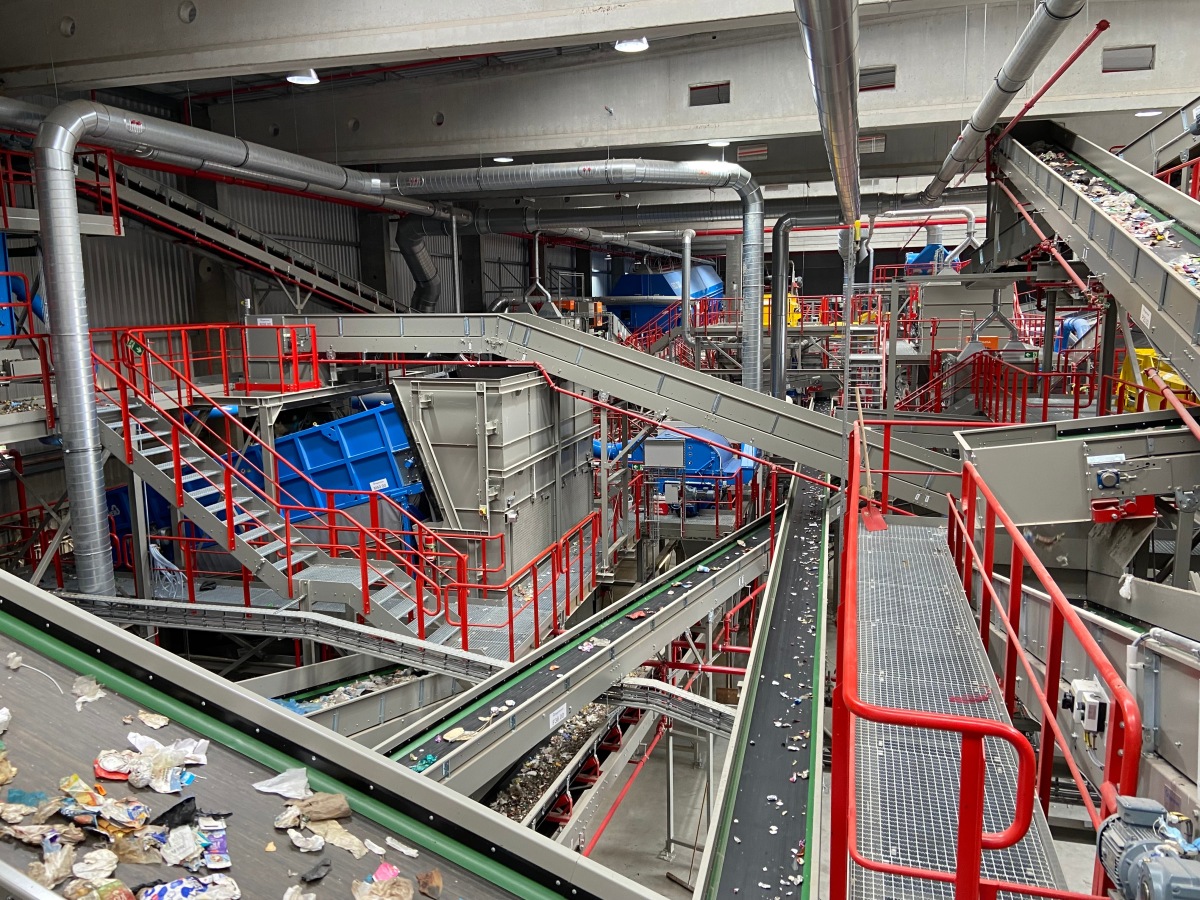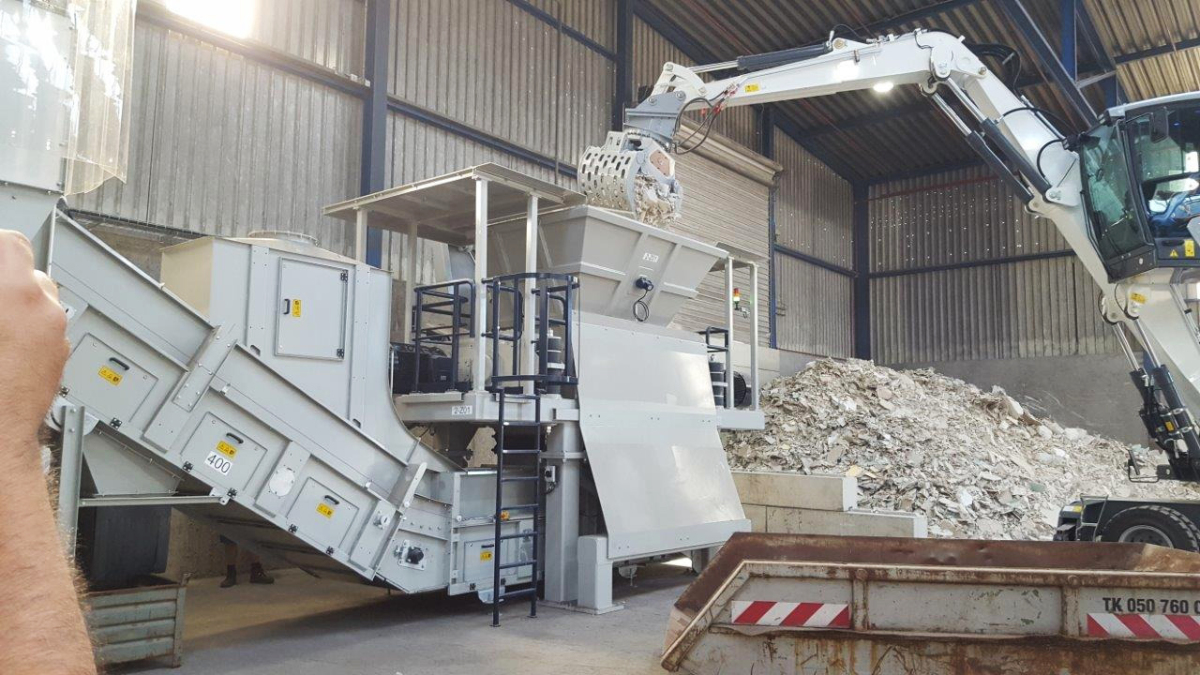Innovations in the field of waste processing
In recent years, the Eggersmann Group greatly broadened its range of products and services by acquiring various companies and brands. Visitors to this year’s IFAT could experience numerous solutions in the field of mechanical and biological waste processing as well as mobile and stationary product innovations in the area of shredding, screening, separating, turning and bag opening.
Moreover, a machine for biological drying and composting had its premiere: Backhus Con 60 combines the proven Backhus turning technology with the flexible Convaero system, allowing for efficient turning in lanes for composting and biological drying of municipal solid waste and organic wastes, digestate and sewage sludge. The turner is equipped with a crawler chassis used to run along the lane walls while turning within the walls. Backhus Con 60 is furthermore equipped with two membrane winders that simultaneously wind and unwind the membranes during the turning process. This ensures a virtually closed system even during turning. This innovation from Eggersmann is also available for lane widths of 7.5 m (Backhus Con 75) and 10 m (Backhus Con 100).
In the field of shredding the mobile universal shredder Teuton Z 55 and the stationary version Teuton ZS 55 were presented. Furthermore Eggersmann introduced to the market Forus FLX 85-200, the first shredder that can be converted from conventional synchronous shredding to asynchronous shredding in just a few simple steps. Its swing-hinged hopper walls and a platform built into the doors of the drive unit furthermore allow for comfortable access to the shredding shafts. These can be exchanged quickly and safely by means of a threaded flange coupling which means the machine can be effortlessly adjusted to various materials such as foils, plastics as PET and HDPE hollow parts, matresses, bulky waste, biowaste, waste wood and more. In addition, the type of shredding and the grain size of the shredded material can be adjusted through one’s choice of tools. In addition, a press-feed unit in the feed hopper prevents the bridging of light and bulky materials and thus ensures optimised throughput.

